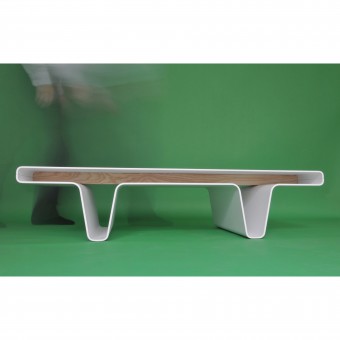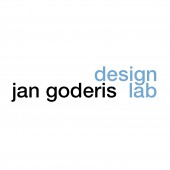Bend Coffee Table by Jan Goderis |
Home > Winners > #148865 |
 |
|
||||
| DESIGN DETAILS | |||||
| DESIGN NAME: Bend PRIMARY FUNCTION: Coffee Table INSPIRATION: The inspiration was very basic. From the idea of creating a flowing 2-dimensional line design to a 3-dimensional table that can be made out of 1 sheet, metal or wood. And where the shape of the line can incorporate the essential elements for a coffee table, namely an outlet, supports (legs) and storage without becoming banal. Translated from an ordinary continuous line. The fluid continuous line gives a sculptural aspect to the table, which is in dialogue with its surrounding and user. UNIQUE PROPERTIES / PROJECT DESCRIPTION: The table is made of two bent aluminium plates which fit together. When put together, the plates extend all the way to the legs. This gives a certain transparency and lightness to the design and vertical storage is created for magazines, newspapers, and plaid... In between the two top plates, there is also the possibility of storage on both sides of the table. OPERATION / FLOW / INTERACTION: The pleated plate provides continuous support for the table and also provides storage in the legs and the space between the bottom and top. PROJECT DURATION AND LOCATION: The design started in 2017 and finalized in 2022. Both in Ghent, Belgium. FITS BEST INTO CATEGORY: Furniture Design |
PRODUCTION / REALIZATION TECHNOLOGY: Made of 2 parts pleated aluminum sheets (lower and upper parts) finished with a more environmentally friendly lacquering process. Oak wood slats to join the 2 aluminum plates together. SPECIFICATIONS / TECHNICAL PROPERTIES: Dimensions: 125 x 55 x 28 cm TAGS: coffee table, folded table, ecological design, functional design, minimal design RESEARCH ABSTRACT: The basis of the design is a smooth continuous line. When folding certain parts, cracks appeared. This was solved by choosing a different aluminium alloy and heating it when folding. It also sought to split the table into two parts so that it could be easily assembled and transportable. By making a separate top and bottom top, with a connection joint on the sides, and fitting together with invisible pins. For the top, two wooden beams are glued in the middle. Both parts are invisibly connected at the bottom with a few screws. CHALLENGE: The design started in 2017. It consisted only of 1 pleated non-continuous line with only the pleated legs and the laying surface. To prevent the folding of the laying surface under load, reinforcement surfaces were provided at the bottom and between the supports, but they were very distracting. It wasn't until 2022 that the idea of using a continuous pleated line with a continuous top surface between which invisible wooden beams could be provided for strength and to invisibly connect the bottom and top. Using a continuous line only made the design more visually logical and aesthetic. ADDED DATE: 2023-02-21 18:31:57 TEAM MEMBERS (1) : Jan Goderis IMAGE CREDITS: #1 photographer Jan Goderis, 2022 #2 photographer Jan Goderis, 2022 #3 photographer Jan Goderis, 2022 #4 photographer Sonny Plasschaert, 2022 #5 photographer Jan Goderis, 2022 PATENTS/COPYRIGHTS: e-depot: 000595853 |
||||
| Visit the following page to learn more: https://www.jangoderis.com/ | |||||
| AWARD DETAILS | |
 |
Bend Coffee Table by Jan Goderis is Winner in Furniture Design Category, 2022 - 2023.· Read the interview with designer Jan Goderis for design Bend here.· Press Members: Login or Register to request an exclusive interview with Jan Goderis. · Click here to register inorder to view the profile and other works by Jan Goderis. |
| SOCIAL |
| + Add to Likes / Favorites | Send to My Email | Comment | Testimonials | View Press-Release | Press Kit | Translations |
| COMMENTS | ||||||||||||||||||||
|
||||||||||||||||||||
Did you like Jan Goderis' Furniture Design?
You will most likely enjoy other award winning furniture design as well.
Click here to view more Award Winning Furniture Design.








